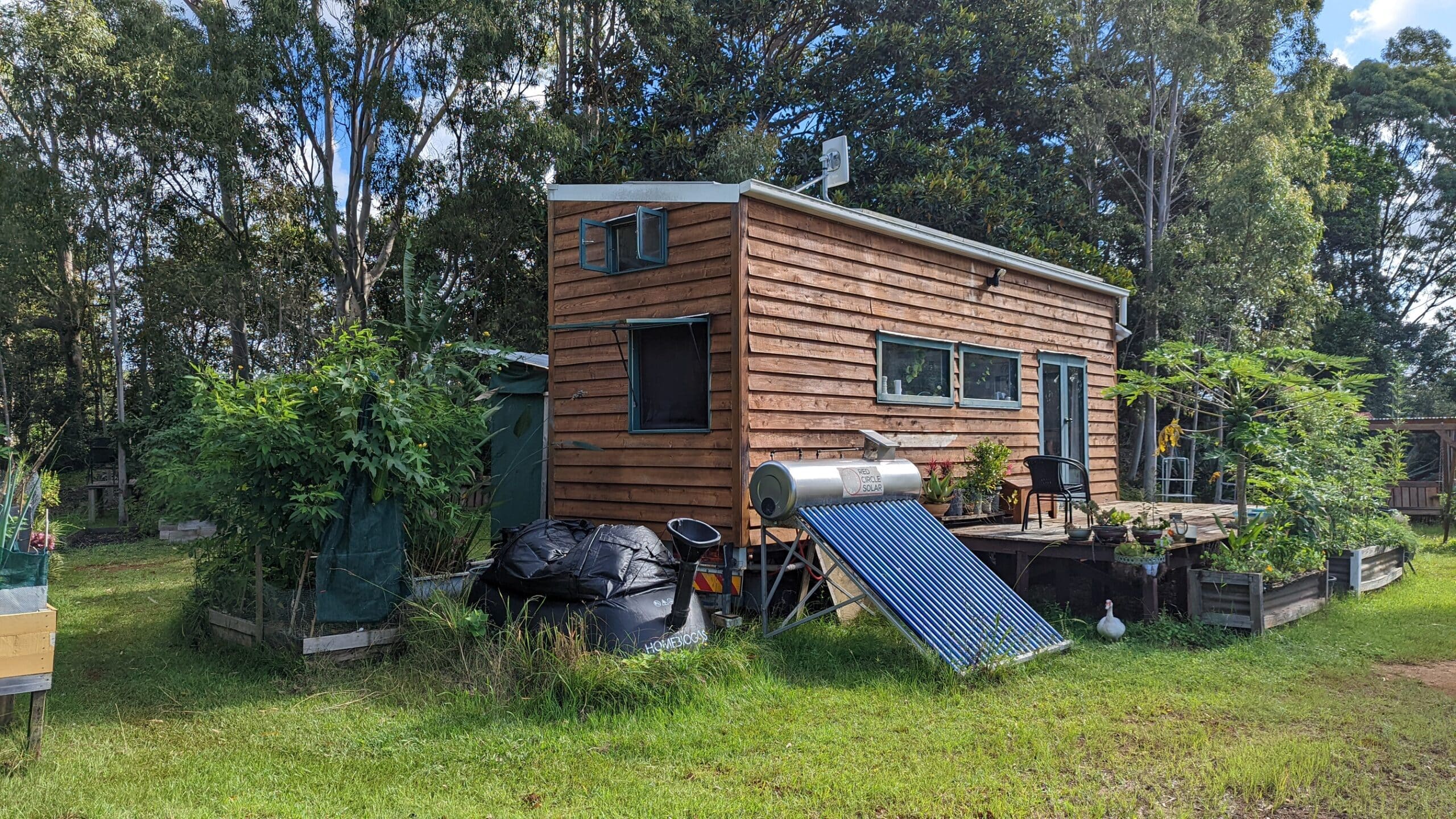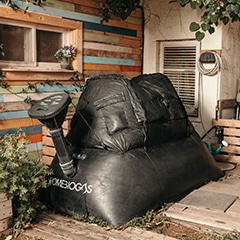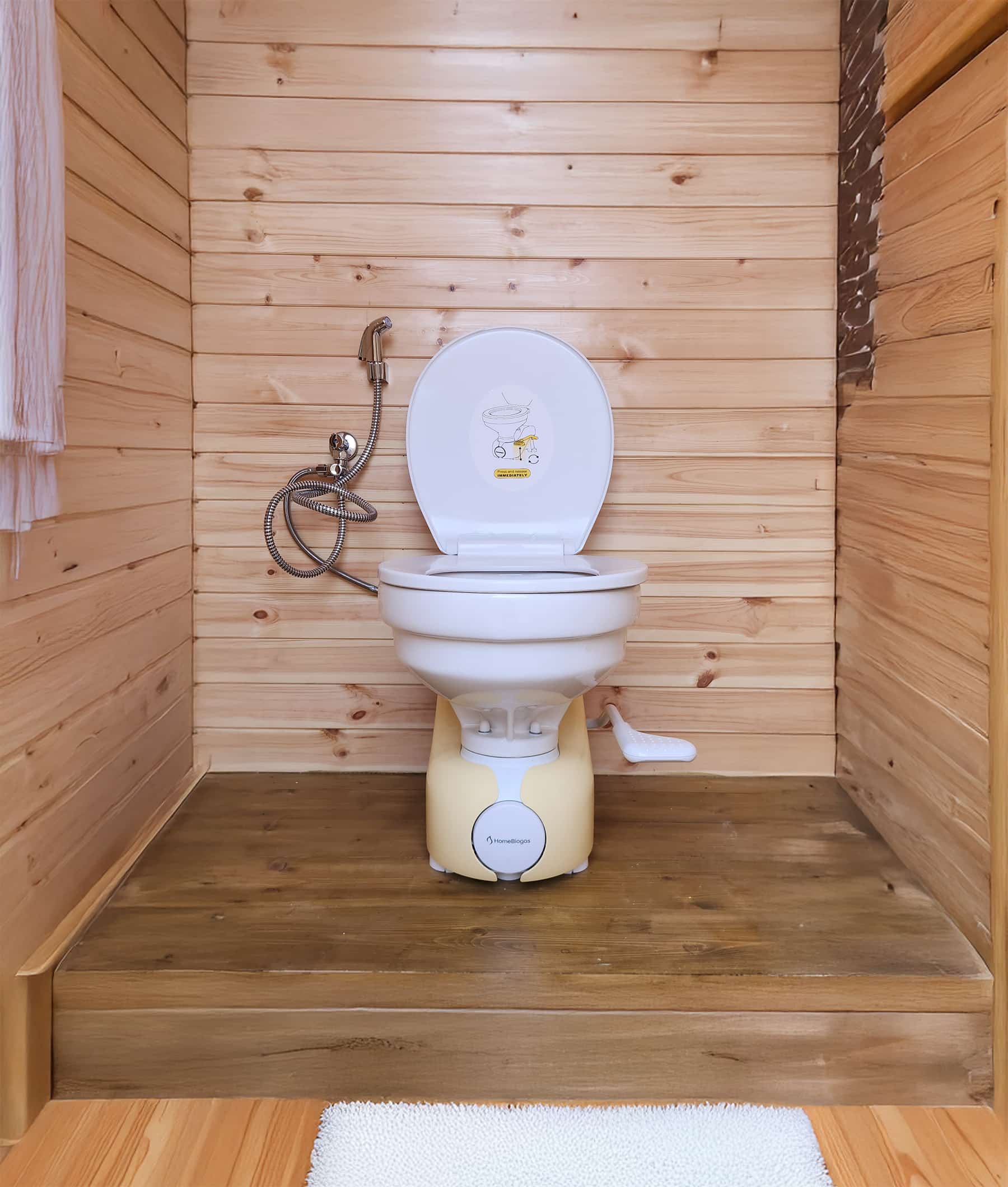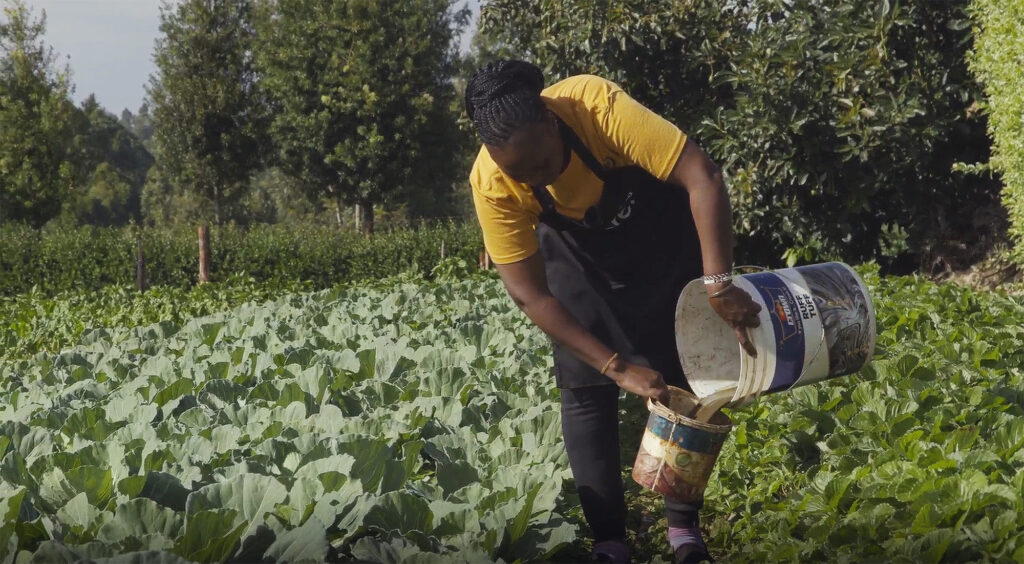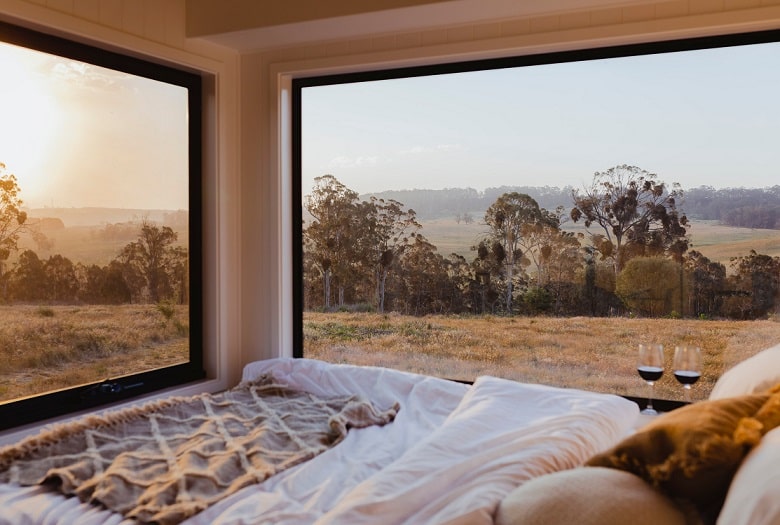
How does a composting toilet work in a tiny house?
While not everyone may find them appealing, composting toilets can be a practical on-site waste management solution for a tiny house — especially when you build off-grid or have limited access to utilities. That’s because they eliminate the need for a septic system while helping save space and resources.
Composting toilets for tiny homes come in multiple sizes and shapes, but overall, most models function on the same principles:
- The toilet collects solid and liquid waste in separate containers. Solid waste goes into a composting chamber where bacteria break it down and turn it into compost. Depending on your existing infrastructure, the urine separator diverts liquid waste to a different container or directly to a gray water system.
- Microorganisms like bacteria and fungi break down solid waste. The composting process can take around 20 days and requires the presence of a carbon-rich material like sawdust, coconut coir, or peat moss. At the end of the cycle, you obtain a nutrient-rich mixture to use as fertilizer.
- A ventilation system, usually powered by a fan, controls odor and moisture levels by circulating and expelling air.
- The system requires regular maintenance to ensure proper functioning. Plus, it’s important to monitor the temperature and moisture levels of the compost pile, and adjust as necessary.
Does the compost toilet smell?
The simple answer is no; composting toilets for tiny homes don’t smell. However, this is only true for a properly maintained system. Foul odors coming from a composting toilet are a red flag, and it’s essential to troubleshoot the issue and fix it.
Some possible reasons a composting toilet might smell are:
- A stopped exhaust fan
- A too-wet compost pile
- The use of harsh chemicals for cleaning the toilet
- Exposure to extreme temperatures that kill the good bacteria
Maintain your tiny composting toilet properly by checking the exhaust fan regularly, adding dry carbon-rich materials after every usage, and using environmentally friendly cleaning products in your bathroom. This way, your composting toilet stays an efficient and sustainable option for your tiny home.
Benefits of using a composting toilet for a tiny house
- Composting toilets are compact and take up less space than traditional toilets, which is significant when you have limited square footage.
- These systems use natural processes to turn human waste into nutrient-rich compost, making them an eco-friendly option.
- Composting toilets come in many different models, so finding a design that suits your needs and preferences is easy.
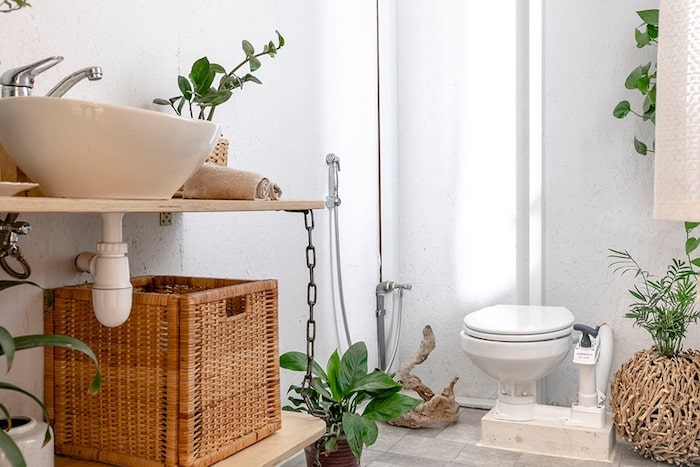
HomeBiogas Bio-toilet
Designed for the next generation of green innovation.
- Most composting toilets require small amounts or no water for flushing, with a long-term impact on your bills.
- Composting toilets don’t need a septic tank, meaning you can build your home in areas without access to a sewer system.
- They’re one of the few tiny house toilet options that require relatively low maintenance.
- Well-maintained composting toilets don’t generate unpleasant odors, which is a huge plus when your small property is close to neighbors.
- Composting toilets can be cheaper than traditional toilets because they involve fewer plumbing fixtures.
- Tiny house composting toilet options are easy to install.
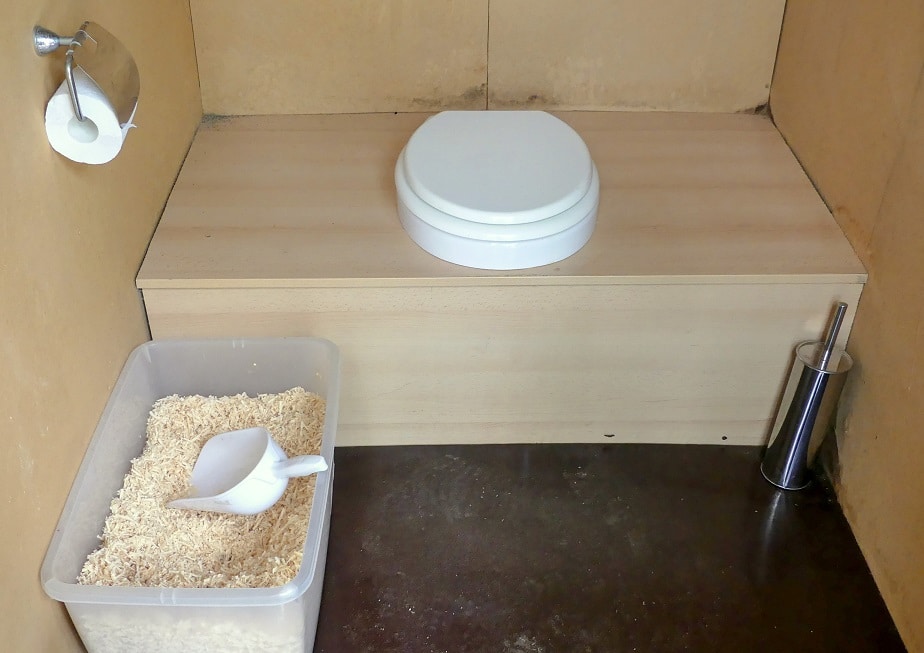
How to empty and maintain a compost toilet in a tiny house?
One way to approach compost toilet maintenance in a tiny house is to tackle some simple tasks regularly — frequency can depend on the size and model of your system. These tasks include emptying the urine diverter and the solid waste bucket, cleaning the fan filters, sanitizing, etc.
Like a flushing toilet, wipe down your composting toilet once a week or whenever you clean the bathroom to keep it functioning efficiently and smelling fresh. You can use bicarb soda and vinegar for a regular deep clean.
Cleaning the urine diverter is a crucial maintenance task, especially when you have limited space. Start by emptying the container — you can dilute the urine with water before disposing of it to avoid any potential odor issues. Then, use a cleaning solution such as vinegar and water or a specialized cleaner to thoroughly clean the diverter and surrounding areas. Be sure to remove any buildup or residue that may have accumulated, which can slow down urine flow and cause odors.
It is also essential to regularly inspect the urine diverter for any signs of damage or wear, such as cracks or leaks. If you find any issues, replace the diverter to ensure the composting toilet’s continued functioning.
Emptying a composting chamber is a less frequent task. Here is a step-by-step guide:
- Put on gloves and a mask before emptying.
- Empty the container into a larger compost bin or bag. Use a scoop or scraper to remove debris stuck in the composting chamber.
- Add a composting agent to help complete the decomposition process.
- Use a gentle, eco-friendly cleaning solution to wipe down the toilet and surrounding area. Avoid harsh chemicals or bleach, which can harm the good bacteria in the composting toilet.
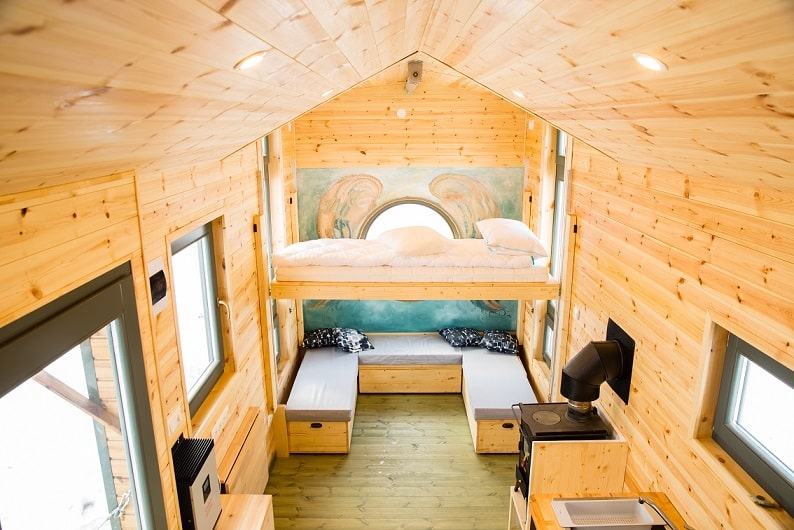
How to choose the right composting toilet for your tiny house
When evaluating tiny house composting toilet options, keep a few things in mind to pick a solution that will make you love your home even more with time:
1. Consider the size of your bathroom
The space you have will determine the best toilet for your tiny house. You want to choose a system that fits comfortably, so measure your bathroom and consider all the elements it’ll include before deciding. Look for compact designs with space-saving features like a slim profile or a smaller base.
Space limitations also influence the type of composting toilet you choose. Self-contained models handle all the composting within the toilet unit, while central models direct waste to an external area for composting. For tiny homes, self-contained models are often the best choice, but you can expand your options when your small house has significant outdoor space.
2. Think about the capacity of the toilet
Consider the capacity for liquid and solid waste, and remember that larger-capacity toilets may also take up more space.
How often will you be using it? Do you have a big family or plan to use it frequently? If you plan to use it sparingly, portable composting toilets, usually used for mobile homes or camping, might be a better (and sometimes cheaper) option.
3. Check power source requirements
Most tiny house toilet options typically have a small vent fan on a small solar panel or a 12-volt battery, which is easily rechargeable. Larger systems need a more reliable power source to operate a fan or transport waste to a central composting area.
If you plan to live off-grid or have limited access to electricity, a self-contained composting toilet is likely the best option.
4. Calculate installation and maintenance costs
Composting toilets can be cheaper than flushing toilets in the long run, but there’s still a significant investment between upfront installation costs and maintenance kits. Choose a composting toilet that is easy to clean and maintain, in line with your resources and availability for routine maintenance tasks.
Research, read reviews from other tiny house owners, and choose the best option. You’ll soon be on your way to a sustainable and efficient waste management system.
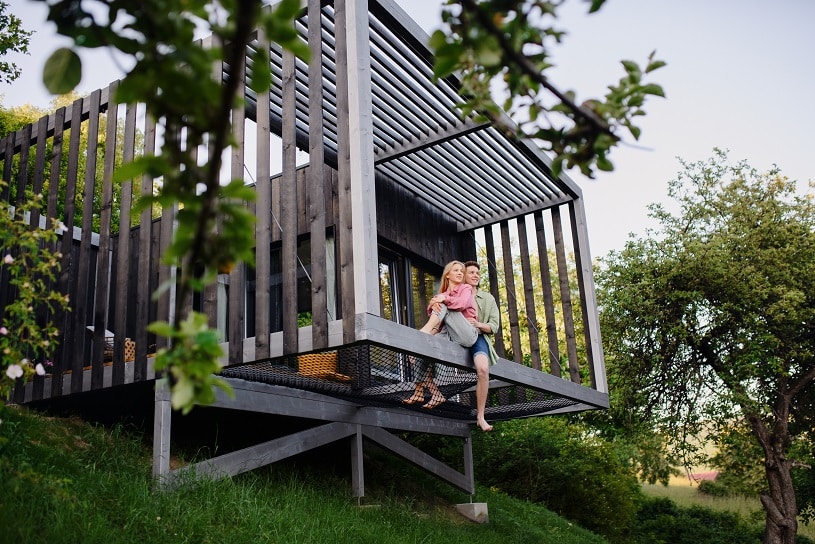
HomeBiogas Bio-Toilet solutions for small houses
The HomeBiogas Bio-Toilet kit is a sustainable and eco-friendly solution, offering a superior alternative to regular composting toilets. Not only does the Bio-toilet kit break down waste, but it also produces renewable biogas for cooking and for effluent that needs simple further treatment through a mulch basin or drainfield. By turning waste into biogas, tiny house owners reduce their reliance on fossil fuels and decrease their environmental impact.
The HomeBiogas Bio-toilet kit includes a porcelain pedestal that blends seamlessly with modern bathrooms. It’s a unique and innovative solution for those seeking off-grid living without sacrificing comfort or hygiene. And it doesn’t require a traditional septic system (but works with septic tanks if there is one!), which is a big plus for tiny houses.
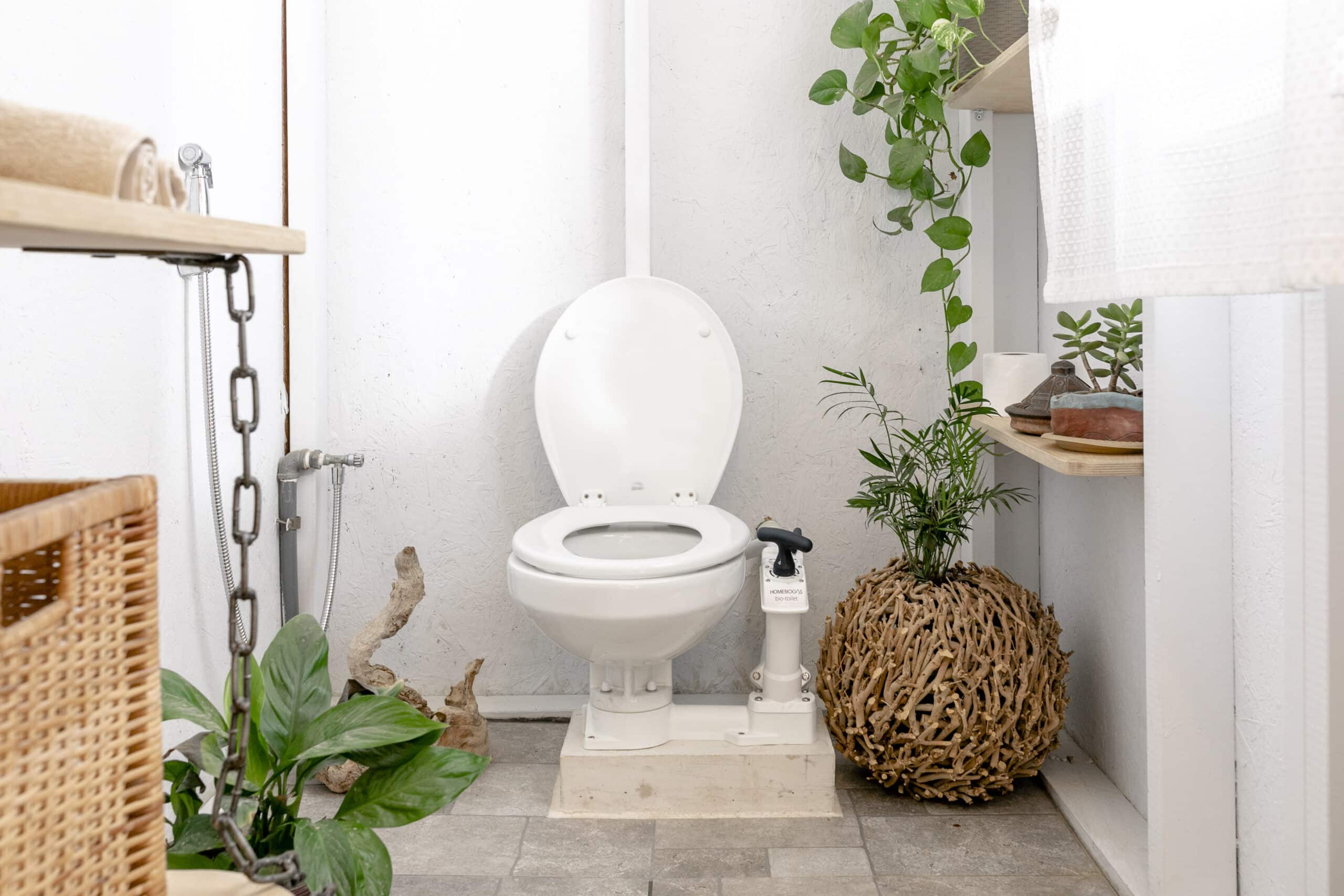
The HomeBiogas Bio-Toilet kit is easy to install and comes with hassle-free maintenance, ensuring you can enjoy a self-sustainable lifestyle without headaches. Moreover, waste management through anaerobic digestion is safe and environmentally friendly, reducing the carbon footprint and enabling a sustainable lifestyle for small house owners.
Final Thoughts
Composting toilets are becoming increasingly popular in tiny houses as homeowners look for eco-conscious living and sustainable practices. These systems offer several benefits over traditional flush toilets, including reduced water usage and decreased environmental impact. Plus, they don’t need a sewer connection, making them a cost-effective and space-saving option.
